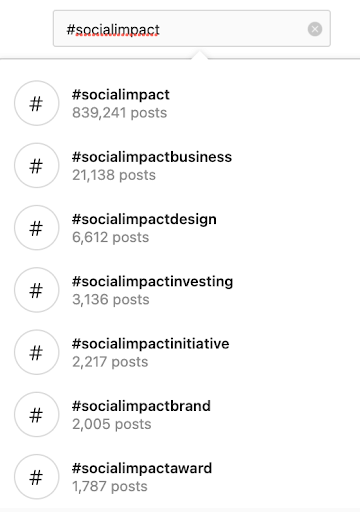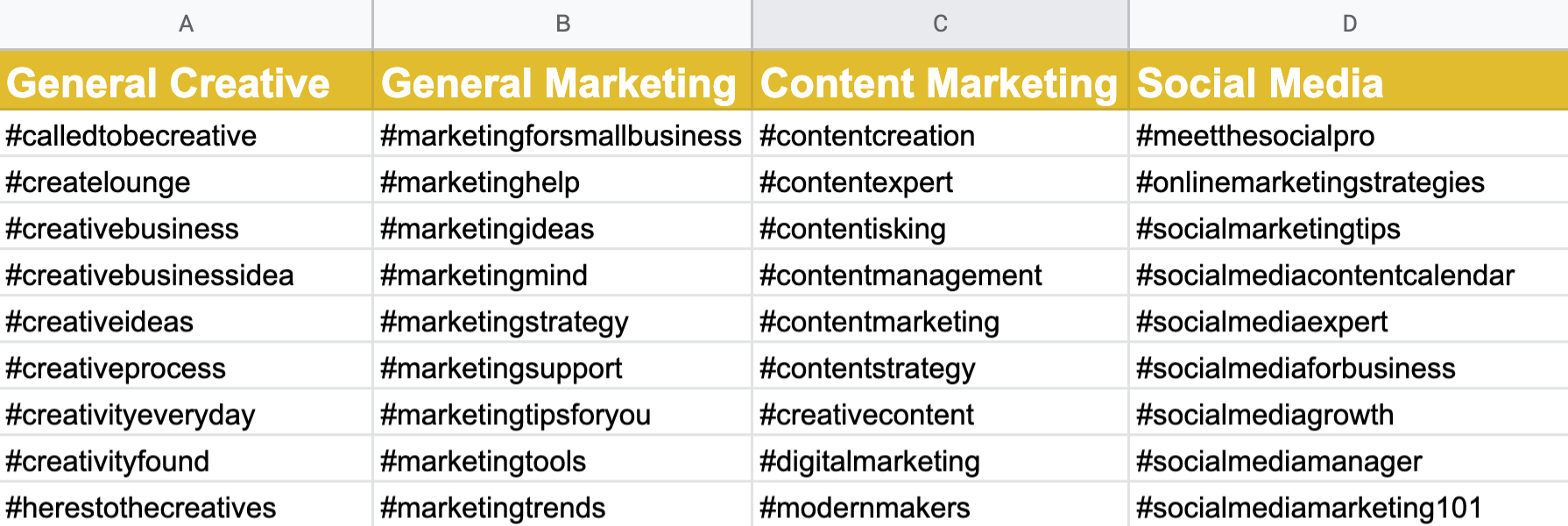Looking for new ways to connect with your customers? Whether it’s Instagram, Twitter, LinkedIn, Facebook, TikTok, or Pinterest, each platform has one major thing in common: it allows businesses to promote their goods or services AND connect with their target audience. Doing so has never been more accessible, and, not to mention, free. The added benefits of increasing brand awareness and boosting sales online are other compelling factors worthy of their own individual blog post.
Connecting on social platforms is a beneficial relationship for consumers too. Gone are the days of being left on hold for hours on end when trying to get a simple answer to a question. Today, a quick tweet will suffice and customer service issues are handled swiftly. As well as being updated on the lives of their friends and family, users can browse the latest trends – 83% of Instagram users report that they find new products on the platform.
It’s a win-win for all! So, what should small businesses focus on when constructing an effective social media strategy? And how do you grow a following organically?
What To Include In Your Social Media Strategy
We’re Not Robots
What’s that old saying? People buy from people, not businesses. Even in a sea of digitalization, the “human touch” prevails; it allows brands to show off their values, the people who help run the company and how their products or services work IRL. On a deeper level, brands can successfully demonstrate that not only do they understand their customers’ needs, how they communicate and how best to engage with them, but more importantly, that they can deliver and address those needs, and solve their problems.

WordSmithie has a talented team of wordsmiths, and their social media channels reflect the expert knowledge that they share with their audience.
How do you hit a home run, you ask? Consistently transparent messaging and authentically caring about your audience are factors that are now setting brands apart. For example, businesses who are open about supply chain issues and flag them immediately before the customer has a chance to, elevate themselves to a higher level of consumer trust. By taking accountability for any problems that arise, companies become trustworthy in the eyes of their audiences.
What’s On Your Mind?
A study conducted earlier this year revealed that 76% of consumers trust small businesses more than large corporations. People look to small brands that they trust for news and information on social media.
By sharing your insights and the broader challenges in your industry, you can establish your business as a thought leader – demonstrating to your target that you know what you’re talking about and can be relied on. While we suggest occasionally following hot topics that are on everyone’s lips, it’s crucial that your content agenda is set by your audience. Ultimately, they determine what the questions are and it is your duty to answer them well. So ask them what they want to know or learn more about, and respond fully.
Creating this type of content is far more engaging than promotional posts too. Let’s not forget that (in the simplest terms) audiences want to be informed, educated and entertained, and thought leader content meets all of the criteria.
View this post on Instagram
In our own Instagram, we round up the latest news in the digital marketing world to keep our followers updated.
Let Other People Do The Talking
There is no better way of advertising your product or service than by letting other people rave about it. Micro-influencers (those with 5,000 – 20,000 followers on their biggest social media platform) are worth tapping into when it comes to creating this type of content. Why? Compared to macro-influencers (those with up to 500,000 – 1 million followers), studies have shown that micro-influencers have a 60% increased engagement rate and enjoy a 20% higher conversion rate, illustrating that brands can utilize already formed online communities to boost sales.
You can take influencer marketing even further by creating video content. Video marketing is a popular tool that is used to give the audience a chance to hear about your business straight from the horse’s (or in this case, influencer’s) mouth. You can draw attention to your brand from people who already engage with similar content.
View this post on Instagram
Interwoven uses quotes from clients to promote their networking services.
Top Three Social Media Tips Round-Up
To sum up, we recommend you:
- Be human: Talk like your audience (use their language) and be open with your communication.
- Show your insights: Sharing is caring! Demonstrate to your audience that you are a credible source of information and answer their burning questions.
- Tap into established communities: Partner with micro-influencers to spread brand awareness, optimizing your content for videos.
Once you feel like you’ve conquered the above, let’s move on to…
How To Grow An Organic Following On Social Media
Community
Nope, not the hit American sitcom with Donald Glover (alas). Community management is about building a loyal band of engaged users, who enjoy your content and show their love by liking, commenting, sharing and supporting your business directly. They are interested in your views and opinions, and they also value prompt responses to their comments or queries.
While we should look at the number of followers as a vanity metric, it’s clear that the engagement rate is really where the party is at. Having tens of thousands of ghost followers is as good as having zero if users aren’t engaging with your content.
We’ve written about how to ace the community management game before. You can:
- Interact with new accounts to increase your brand visibility. We recommend following industry-specific hashtags and adding comments on popular posts.
- Answer direct messages, i.e. not leaving followers “on read”.
- Encourage followers to take part in the conversation of your posts by posting compelling CTAs.

Get Found With Hashtags
When most people discover brands, they check their social media platforms first to see what kind of content they share and gauge if the business’s values align with their own personal views. So, it’s important to make this first impression count!
Interestingly, in addition to Google and Bing, people have started using social media as de facto search engines. Businesses can attract a wider audience (and keep them around) by using the appropriate hashtags and continuously producing high-quality, as well as visually appealing, content.
We think that hashtags are an underrated part of most social media strategies and we’re making the case that it shouldn’t be overlooked. So, where do you start with hashtag research?
1. Use the social media platform that you will be posting on to find synonyms/words related to your business and compile your findings by category in a spreadsheet.
-
- Instagram’s explore page is a great tool as it also allows you to see the search volume of keywords, i.e. the number of times it has been used, ergo how popular it is.

- Instagram’s explore page is a great tool as it also allows you to see the search volume of keywords, i.e. the number of times it has been used, ergo how popular it is.
2. Check out which hashtags your competitors are using and add these to the list.
3. Use free websites such as DisplayPurposes and Keyword Tool for general hashtags to tap into
4. Note that the popularity and use of hashtags may differ from platform to platform. A hashtag on Instagram may get less traction on Twitter, for example, so ensure that your hashtag use reflects this.
Through ongoing research and trials, you will soon be able to find niche hashtags to use. This means that your content will be seen by the right people who are looking for your specific type of content.

At the end of your research, you should have a collection of general keywords as well as more specific keywords related to your business, industry and services.
Analyze Your Data
As a business owner, you may feel like you know your customer base to a T. But some findings may shock you. With the data collected from social media sites, you will be able to define your audience and really get into the nitty-gritty of what makes them tick, what they like and what they don’t like. Using this information, you can tailor your content accordingly.
Looking For An Extra Pair of Hands?
If the tasks above seem like a lot, it’s because it is! Trust us, we know.
Faced with the everyday realities of running a small business, all of this can easily slip and fall by the wayside. That’s why we’re here to help.
At its core, engaging with your online community shows that your small business truly cares about its customers. This is a pivotal differentiator that sets your business apart from the competition.
If you’re looking to grow your digital footprint without breaking the bank, find out more about our services. We’ve written about our collaborations with a range of businesses from the tech industry to beauty to ecommerce to give you an idea of how we can lend our expertise to your business.

